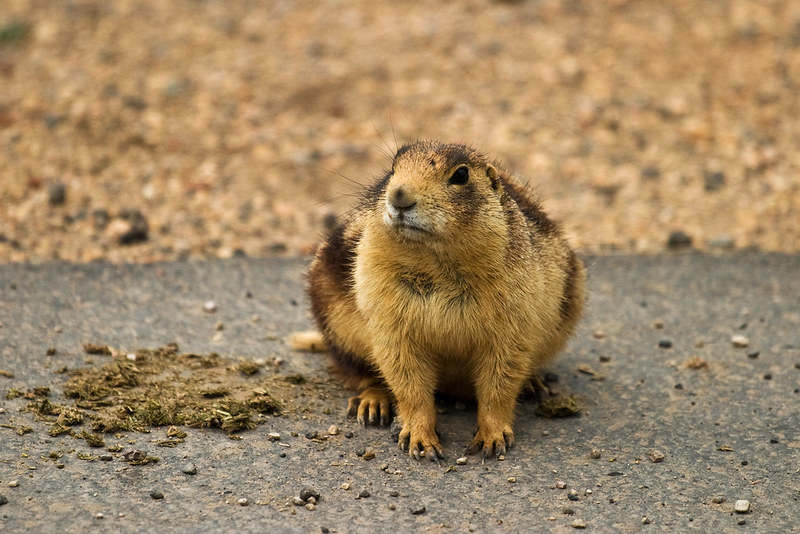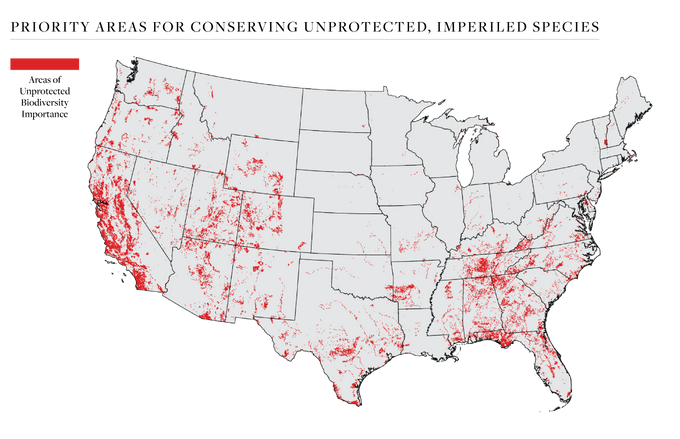“We are currently experiencing and causing the Sixth Extinction—the mass extinction of species across the planet,” said the head of NatureServe, which also found a third of plants nationwide are under threat.
By Jessica Corbett Published 2-5-2023 by Common Dreams

The Utah prairie dog (Cynomys parvidens) is listed as imperiled by NatureServe. (Photo: James Marvin Phelps/NatureServe)
Underscoring the need for humanity to overhaul its relationship with nature, 34% of plants species and 40% of animal species across the United States are at risk of extinction while 41% of U.S. ecosystems could collapse, according to an analysis published Monday by the nonprofit NatureServe.
“For 50 years, the NatureServe Network has been collecting the information necessary to understand biodiversity imperilment in the United States. This new analysis of that data, a first in 20 years, makes crystal clear the urgency of that work,” said the group’s vice president for data and methods, Regan Smyth.
“Two-fifths of our ecosystems are in trouble. Freshwater invertebrates and many pollinators, the foundation of a healthy, functional planet, are in precipitous decline,” she pointed out. “Understanding and addressing these risks is critical if we are to forestall devastating consequences for the biodiversity that humanity needs to survive.”
Noting that roughly a third of plants are in danger, the report—Biodiversity in Focus: United States Edition—explains that “this is an alarming general finding, but certain taxa face even greater threats. For example, 48% of cactus species are at risk of extinction, while around 200 tree species (about 20%) are at risk of extinction.”
“Of the hundreds of grass species that form our nation’s great prairies and marshes, about 19% are at risk of vanishing forever,” the document states. “Preventing plant extinction is essential to maintaining ecosystem function and the services that wildlife and people rely upon.”
🚨 NEW REPORT 🚨 A new analysis from NatureServe reveals that over one-third of biodiversity in the United States is at risk of extinction. Read the report at:https://t.co/TceTuw3xgY#biodiversityinfocus pic.twitter.com/rqyJ5RBis1
— NatureServe (@natureserve) February 6, 2023
As for animals, the analysis says that “as a group, species associated with fresh water, including amphibians, snails, mussels, crayfish, and many aquatic insects, have the highest percentage of at-risk species, highlighting the importance of conservation strategies to protect freshwater ecosystems.”
“Among pollinators, bees are particularly threatened, with 37% of assessed species at risk,” the report continues. “The conservation needs of these, and other invertebrate species, are often overlooked, yet many invertebrates are integral to maintaining the ecological functions of freshwater and terrestrial ecosystems.”
Ecosystems across the country face potential “range-wide collapse due to extensive threats such as land-cover conversion,” the publication warns. “Tropical ecosystems in the U.S. are all under substantial risk, but account for relatively small proportions in number and area.”
“Temperate grasslands, boreal grasslands, and shrublands stand out among highly threatened ecosystems that extend over vast areas of the country, with 51% of the 78 grassland types known to be at risk of range-wide collapse,” the report adds. “Temperate forests, boreal forests, and woodlands have also experienced multiple pressures, leading to an at-risk status for 40% of the 107 types of native U.S. forests.”


